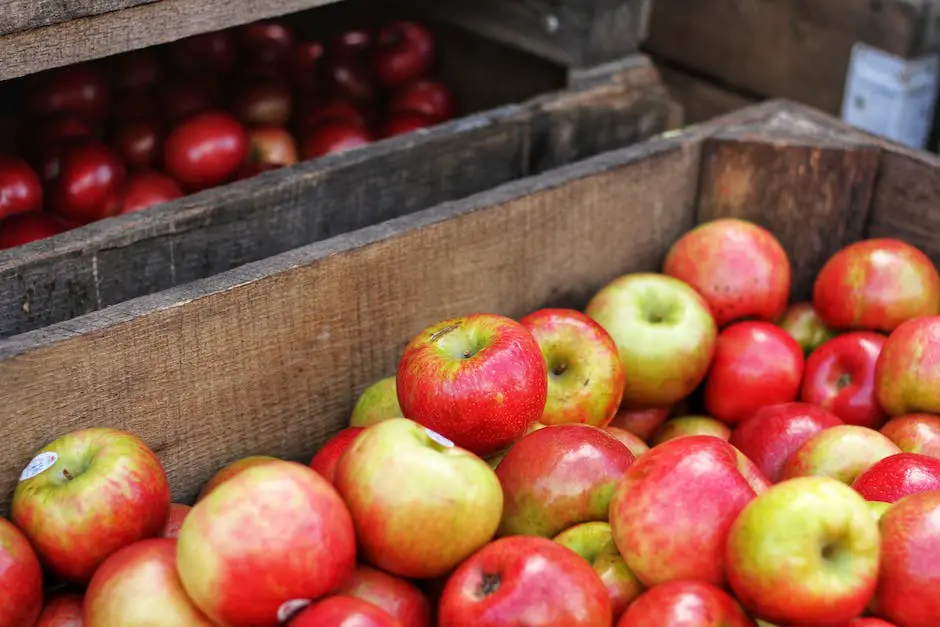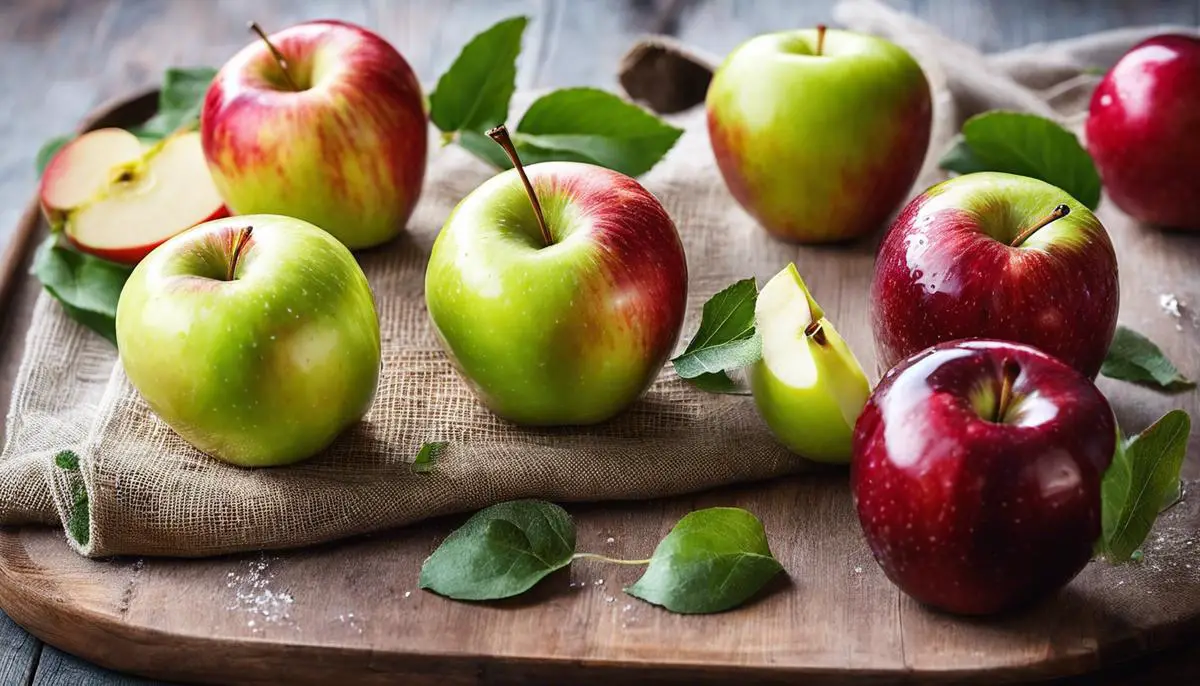We often enjoy munching on a crisp apple or cook up a scrumptious apple pie, but hardly do we stop to consider the different types of apples or how their nutritive properties change. Beyond just being a universal snack or a classic dessert ingredient, varieties of apples – from the sweet ‘Honeycrisp’ to the tart ‘Granny Smith’ – offer distinct tastes, textures, sugar content, and calorie counts. Not only this, but these variations can critically influence the outcome of your culinary experiments, both in terms of flavor and health index. Moreover, taking into account an apple’s calorie count can enormously transform your kitchen endeavors, particularly if you’re aiming for health-conscious cooking.
Understanding Apple Varieties
Whenever the topic of apples comes up, many people often wonder if the variety actually plays a significant role in the calorie count. Delving into this intriguing question dispels any lingering doubts and introduces us to the fascinating world of apples, beyond the standard Granny Smith and Red Delicious.
Surprisingly, the variety of apple doesn’t significantly influence the calorie count. Whether you are munching on a sweet Honeycrisp or a tart Granny Smith, the calorie content doesn’t waver by much. On average, a medium-sized apple, about 182 grams, contains around 95 calories. This count remains consistent across the board, from the ever-popular Fuji and Gala apples, to the lesser-known Braeburn and Pink Lady.
The calories in apples are primarily from carbohydrates, with an average apple containing about 25 grams. They also provide a decent amount of fiber, especially if eaten with the skin on, keeping those hunger pangs at bay. In addition, apples are rich in important nutrients such as vitamin C and potassium. So, even if apple varieties do not affect the calorie count, they absolutely make a difference in the flavor profiles. And let’s be honest, isn’t that truly what food lovers care about the most? Every apple carries its unique flavor punch, so why limit yourself? Mix it up and bring those delicious varieties into your apple recipes to enjoy a symphony of flavors. Because in the end, it’s all about savoring a delectable apple and not counting its calories.

Adopting Apples in Healthy Recipes
Taking the plunge into the flavorful world of apples now, let’s unleash the versatility of this culinary powerhouse. Starting with a straightforward yet tried-and-true method, consider incorporating apples into your morning routine by blending them into a rejuvenating smoothie. Pair a blend of 4oz of Golden Delicious apples with spinach, almond milk, and a spoonful of chia seeds for a fiber-packed, antioxidant-rich start to your day. You can also add a few slices of apples to your oatmeal, paired with some walnuts and a drizzle of honey, promising a delightful crunch, natural sweetness, and additional satisfying nourishment without excessive calories.
Being an element of surprise in savory dishes, apples can demonstrate their diversity in the culinary realm. A crisp, juicy apple such as Granny Smith or Braeburn finely chopped can add a satisfying crunch to your chicken salad or tuna sandwich. This unsuspected combination creates a delicate balance of creamy and crunchy textures that also adds an unexpected hint of sweetness. Meanwhile, when thinly sliced, apples can be an innovative and health-conscious pizza topper, coupled with a lean protein like grilled chicken and a light sprinkle of low-fat gouda. Through the process of baking, the apple slices soften and caramelize, bringing out a slight tartness that complemets the savory ingredients extraordinarily.
Lastly, taking apples into the dessert territory can be an exciting exploration. Remember, sweet does not automatically mean unhealthy. A stovetop apple compote using 4oz of a tart apple variety, like the McIntosh, with just a touch of maple syrup, a bit of lemon juice and a sprinkle of cinnamon can be an excellent topping for plain Greek yogurt or whole grain pancakes. Preparing apple-based desserts allows for a reduced amount of added sugars, amplifying the natural sweetness of the apples, while simultaneously enjoying a delicious guilt-free treat.
In all, apples are incredibly adaptable in the kitchen, augmenting the textural and flavor components of a multitude of dishes. Transforming the humble apple into tantalizing concoctions is undoubtedly a testament to its culinary prowess, whether it’s part of a whopping feast or a simple, solitary snack. The apple is a testament to the saying ‘Less is More’ in the realm of health-conscious eating. With 4oz of an apple a day, you are not only keeping the doctor away but also opening a gateway to nutritious and delectable meals.

Delve into the fascinating world of apple varieties and their nutritive profiles and learn to employ them in a myriad of appetizing, calorie-conscious recipes. Your perception of apples will extend beyond just being a fruit or a pie ingredient, recognizing their potential impact on your diet and culinary ventures. A 4 oz serving of apple, depending on its variety, could be a subtle but crucial determinant of your recipe’s outcome. Infuse your cuisine with an exciting new dimension of flavors, textures, and nutrition by becoming well-versed with the world of apples and their respective calorie counts.